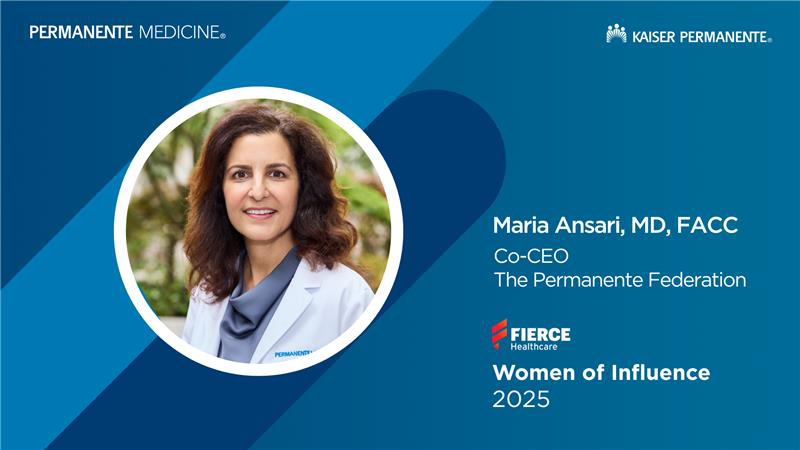Co-CEO of The Permanente Federation recognized for prioritizing physician wellness, improving care quality, and driving advancements in AI.

Dr. Davidoff on how value-based care incentivizes smart investments in AI
For massive investments in AI to deliver value for health care organizations, many elements have to align so that new technologies improve patient care, reduce administrative burdens, and increase access to high-quality care. Ramin Davidoff, MD, co-CEO of The Permanente Federation, shared on a recent Becker’s Healthcare Podcast how Kaiser Permanente’s value-based care model is structured to incentivize innovations like AI that enhance the patient experience and maintain patient trust, while also ensuring positive outcomes for clinicians.
“We are in a unique environment because, as the Permanente [Medical Groups], we are aligned with our hospital and health plan colleagues,” said Dr. Davidoff. “It’s all one big organization that has aligned incentives. And in an integrated value-based model, we get together and we talk about the different types of technologies that can be brought in.”
Integration is a key component of Permanente Medicine value-based care. It aligns goals and incentives while creating efficiencies in care delivery, payment, and administration. When applied to evaluating new technologies, this model facilitates collaboration among physicians, hospitals, health plan staff, and leaders across the organization to ensure the technology benefits patients, clinicians, and the broader health care community.
Introducing AI ambient listening
Dr. Davidoff shared the example of Kaiser Permanente’s rollout of an ambient AI tool to 25,000 physicians. The application records conversations between patients and clinicians during visits to create accurate medical notes for the clinician to review, reducing time spent on clerical tasks and improving face-to-face interaction with the patient.
Since last year’s deployment of the tool across Kaiser Permanente, Dr. Davidoff shared that adoption rates by clinicians have been high and the feedback has been positive.
“We’ve had many physicians who were on the verge of retiring towards the end of their careers,” said Dr. Davidoff. “But, because this technology has been introduced, they tell me directly, ‘I’m going to stay because this has helped me so much throughout my day.'”
Related health care innovation story: Dr. Hoberman on defining responsible use of AI in health care
Noting concerns about biases and inaccuracies that AI tools could introduce, Dr. Davidoff added that as more clinicians and staff use them, and as the tools themselves improve through more data and machine learning over time, the more accurate, safe, and useful they will become.
Dr. Davidoff also highlighted other promising uses for AI in enhancing care. Examples include retinal scans for detecting signs of diabetic retinopathy, advanced tools for evaluating mammograms, and systems for assessing incoming messages from patients to ensure they reach the appropriate care team member, whether it be a physician, pharmacist, or nurse.
Related AI in health care story: Dr. MacLean on using AI to improve breast cancer detection
Robust safety and security measures protect patients, enhance care
Dr. Davidoff also emphasized that Kaiser Permanente cybersecurity measures, including advanced authentication, encryption, audits, training, and drills, are crucial investments that protect patient information and ensure continuous care, which supports patient trust.
Finally, to make sure new technologies are enhancing quality of care, the patient experience, and access, Dr. Davidoff discussed the organization’s use of specific metrics and analytics. These measures assess data points such as patient experience levels, adoption rates, and costs to evaluate the return on investment and alignment with Permanente Medicine priorities.
“We bring in technologies that actually help us with…the quintuple aim of being able to provide high-quality care that is affordable,” Dr. Davidoff said. “These technologies also help ensure that safety, patient perception, and the service experience is good for all involved, including patients and physicians.”
To listen to the full conversation, click here.


